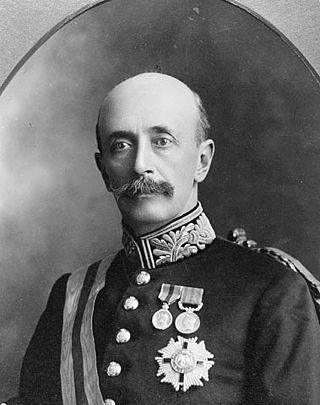
Albert Henry George Grey, 4th Earl Grey, was a British peer and politician who served as Governor General of Canada from 1904 to 1911, the ninth since Canadian Confederation. He was a radical Liberal aristocrat and a member of a string of liberal high society clubs in London. An active and articulate campaigner in late Victorian England, he was associated with many of the leading Imperialists seeking change.
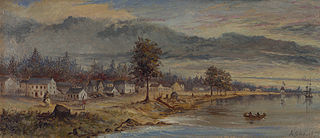
York was a town and the second capital of the colony of Upper Canada. It is the predecessor to the old city of Toronto (1834–1998). It was established in 1793 by Lieutenant-Governor John Graves Simcoe as a "temporary" location for the capital of Upper Canada, while he made plans to build a capital near today's London, Ontario. Simcoe renamed the location York after Prince Frederick, Duke of York and Albany, George III's second son. Simcoe gave up his plan to build a capital at London, and York became the permanent capital of Upper Canada on February 1, 1796. That year Simcoe returned to Britain and was temporarily replaced by Peter Russell.

Events from the year 1838 in Canada.

Edward Smith-Stanley, 12th Earl of Derby PC, usually styled Lord Stanley from 1771 to 1776, was a British peer and politician of the late eighteenth and early nineteenth centuries. He held office as Chancellor of the Duchy of Lancaster in 1783 in the Fox–North coalition and between 1806 and 1807 in the Ministry of All the Talents.
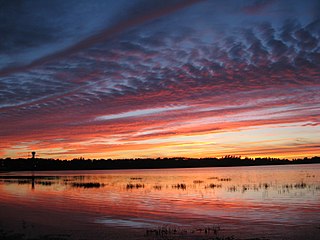
Whitewater Region is a township on the Ottawa River in Renfrew County, located within the Ottawa Valley in eastern Ontario, Canada. Whitewater Region is made up of the former municipalities of Beachburg, Cobden, Ross and Westmeath, which were amalgamated into the current township on January 1, 2001.

Prince William Frederick, Duke of Gloucester and Edinburgh was a great-grandson of King George II of Great Britain and the nephew and son-in-law of King George III. He was the grandson of both Frederick, Prince of Wales, and Edward Walpole. Prince William married Princess Mary, the fourth daughter of George III.

The Bytown Museum is a museum in Ottawa located in the Colonel By Valley at the Ottawa Locks of the Rideau Canal at the Ottawa River, just below Parliament Hill. Housed in the Commissariat Building, Ottawa's oldest remaining stone building, the museum provides a comprehensive overview of the origins of Bytown and its development and growth into the present city of Ottawa.
William Robertson was a businessman and political figure in Upper Canada.
Joseph Emm Seagram was a Canadian distillery founder, politician, philanthropist, and major owner of thoroughbred racehorses.
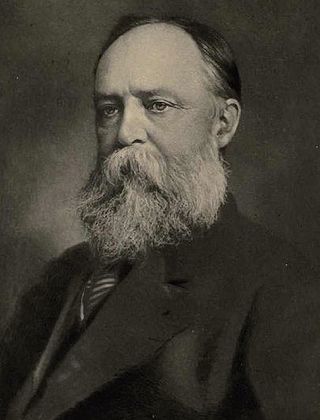
Sir Byron Edmund Walker, CVO was a Canadian banker. He was the president of the Canadian Bank of Commerce from 1907 to 1924, and a generous patron of the arts, helping to found and nurture many of Canada's cultural and educational institutions, including the University of Toronto, National Gallery of Canada, the Champlain Society, Appleby College, Art Gallery of Ontario and Royal Ontario Museum.
Port Ryerse is a fishing hamlet in Norfolk County, Ontario, Canada, southwest of Port Dover. The hamlet is popular with persons from Southwestern Ontario who rent cottages and fish for pleasure during the summer months.

St. Paul's Church is a historically evangelical Anglican church in downtown Halifax, Nova Scotia, within the Diocese of Nova Scotia and Prince Edward Island of the Anglican Church of Canada. It is located at the south end of the Grand Parade, an open square in downtown Halifax with Halifax City Hall at the northern end.
James Lesslie was an Ontario bookseller, reform politician and newspaper publisher. His career was closely associated with - and somewhat overshadowed by - William Lyon Mackenzie, the Reform agitator, mayor of Toronto, and Rebellion leader. However, as a leader himself, Lesslie took a prominent role in founding the Mechanics Institute, the House of Refuge & Industry, the Bank of the People, as well as the political parties known as the Canadian Alliance Society and Clear Grits. In many way, he defined the Reform movement in Upper Canada without having reverted to the violent methods of Mackenzie. His legacy may thus have lasted longer.
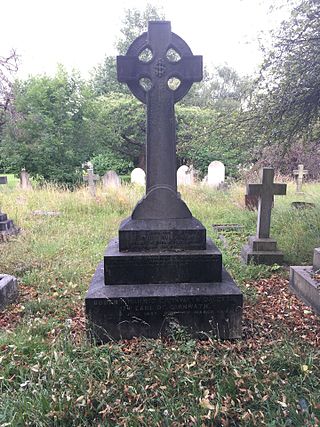
Lieutenant-Colonel Robert Harris Carnwath Dalzell, 11th Earl of Carnwath was a Scottish hereditary peer and soldier.
Ronald Arthur Dalzell, 12th Earl of Carnwath,, was the second but only surviving son of Robert Dalzell, 11th Earl of Carnwath.
Brigadier-General Arthur Edward Dalzell, 13th Earl of Carnwath, CB was a British Army officer and a Scottish representative peer.

Admiral Henry Wolsey Bayfield was a British naval officer and surveyor.

John Campbell Hamilton-Gordon, 1st Marquess of Aberdeen and Temair, was a British politician. Born in Edinburgh, Aberdeen held office in several countries, serving twice as Lord Lieutenant of Ireland and serving from 1893 to 1898 as Governor General of Canada.
Colonel Robert Alexander George Dalzell, CB was a British aristocrat and soldier.
Hugh Ronalds was an esteemed nurseryman and horticulturalist in Brentford, who published Pyrus Malus Brentfordiensis: or, a Concise Description of Selected Apples (1831). His plants were some of the first European species to be shipped to Australia when the British colony was founded.












